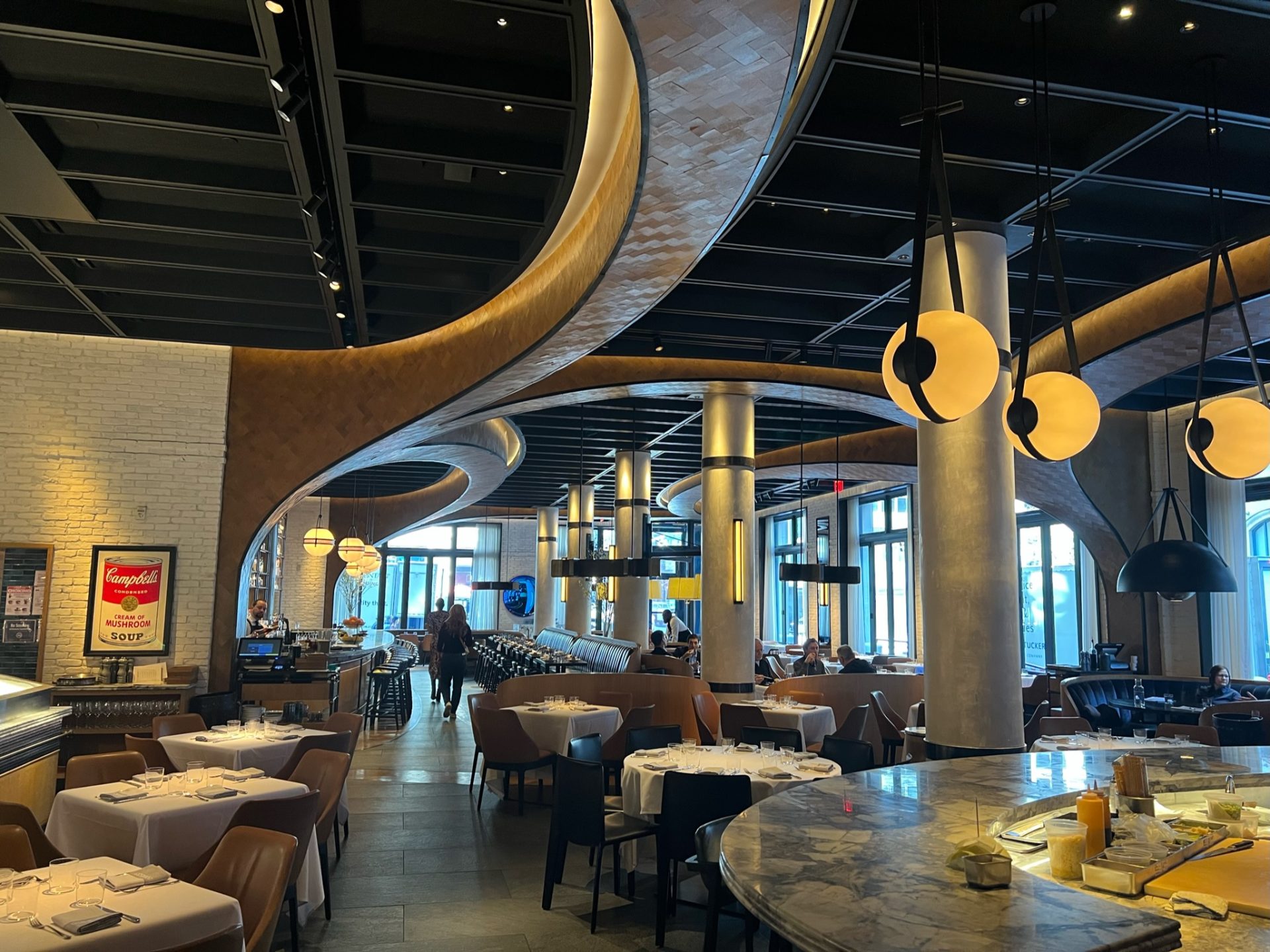Savor Authentic Asian Cuisine With a Pan-Asian Spin for a Culinary Experience
Starting a cooking journey via genuine Asian food, improved with a Pan-Asian twist, offers a special opportunity to discover the rich tapestry of tastes that specify the area's varied culinary practices. This experience invites you to appreciate the elegant balance of preferences-- wonderful, salted, spicy, and sour-- harmonized by aromatic natural herbs and flavors. Imagine the cutting-edge fusion of Thai curry and ramen or the unforeseen delight of sushi burritos. As you ponder these tempting recipes, take into consideration the cultural stories and historical impacts that shape them, each bite supplying a tale waiting to be uncovered.

Exploring Pan-Asian Tastes
In the realm of worldwide gastronomy, Pan-Asian food sticks out for its amazing variety and the harmonious interplay of tastes from numerous Oriental societies. This culinary approach celebrates the rich practices and distinct components found across the continent, producing a tapestry of preferences that is both rewarding and appealing. Key to Pan-Asian cuisine is its capacity to balance different tastes-- sweet, salted, spicy, and sour-- while highlighting the freshness and quality of each component.
From the umami-rich soy sauce of Japan to the fiery chili peppers of Thailand, Pan-Asian cuisine offers an extensive combination of flavors. These components are commonly combined in inventive means, enhancing dishes with layers of complexity. For example, the usage of aromatic herbs such as lemongrass and cilantro, common in Vietnamese and Thai cuisine, adds a revitalizing brightness to meals, while the unification of coconut milk supplies a creamy, rich appearance.
The emphasis on fresh fruit and vegetables and aromatic seasonings guarantees that each dish is not only a feast for the taste however likewise for the senses. Pan-Asian food invites diners to get started on a culinary trip, checking out the huge and varied landscapes of Asian gastronomy with every bite.
Combination Recipes to Try
While Pan-Asian food is celebrated for its conventional tastes, the modern-day cooking landscape is significantly embracing fusion recipes that mix these classic aspects with influences from various other areas. This innovative approach not just honors the rich heritage of Asian cookeries however likewise introduces novel taste experiences that interest modern palates.
A prime example of such a fusion meal is the Korean-Mexican taco, where marinaded bulgogi beef is wrapped in a warm tortilla, covered with kimchi and a hot gochujang-infused salsa. This mix weds the strong, tasty tastes of Korea with the dynamic, fresh aspects of Mexican cuisine. Similarly, sushi burritos have actually gained popularity, integrating the fragile artistry of Japanese sushi with the hearty, hand-held convenience of a burrito, usually including fusion ingredients like tempura shrimp and avocado with a drizzle of wasabi mayo.
Another significant dish is Thai curry ramen, which instills the creamy, aromatic seasonings of Thai curry right into the reassuring broth of traditional Japanese ramen, producing an unified mix that tantalizes the senses. These blend meals expand past mere novelty; they represent a cooking dialogue between societies, urging exploration and development on the planet of Pan-Asian food.
Important Ingredients and Flavors
To absolutely appreciate Pan-Asian cuisine, one should understand the necessary components and seasonings that develop its structure. This diverse cooking style attracts from a rich tapestry of Oriental traditions, employing a harmonious blend of tastes and textures.
Aromatic components are pivotal, with ginger, garlic, and lemongrass being ubiquitous throughout various Pan-Asian recipes. These components offer a great smelling base that improves the intricacy of flavors. Seasonings such as celebrity anise, cardamom, and cinnamon introduce warmth and personality, echoing influences from areas like China and India.

Food Preparation Techniques and Tips
Understanding the art of Pan-Asian cuisine requires familiarity with its unique cooking strategies, each contributing to the lively tapestry of flavors this culinary tradition is celebrated for. Central to these methods is the stir-fry, a fast cooking method that maintains the nutritional stability and vibrant colors of ingredients. Making use of a frying pan, the stir-fry method enables even heat distribution, important for attaining the particular appearance and flavor balance of Pan-Asian dishes.
One more essential strategy is steaming, particularly widespread in Chinese cuisine. This mild approach maintains the all-natural tastes and nutrients of active ingredients, making it optimal for seafood and veggies. Dumplings, a cherished staple, usually gain from steaming, causing soft, succulent appearances.
Barbecuing, also integral, gives smoky midsts to dishes such as Korean bulgogi or Japanese yakitori (pan asian dining Islamabad). This technique often includes seasoning components, allowing flavors to pass through deeply prior to cooking over an open fire or warmer
Lastly, mastering the art of stabilizing flavors-- sweet, sour, salty, bitter, and umami-- is critical. Correctly layering these elements can boost a recipe from regular to extraordinary, using a complicated and pleasing culinary experience that symbolizes the essence of Pan-Asian cuisine.
Eating Experiences Worldwide
Around the world, Pan-Asian cuisine provides an unequaled eating experience, celebrated for its rich tapestry of tastes and vibrant discussions. This cooking sensation has transcended social boundaries, recording the hearts and palates of food lovers worldwide. In multicultural cities fresh York, London, and Sydney, Pan-Asian dining establishments serve as fusions where cooking practices from Thailand, Japan, China, and beyond merge, providing restaurants with an eclectic mix of meals that highlight the area's variety.
The worldwide charm of Pan-Asian cuisine exists in its capability to provide both authenticity and advancement. Chefs masterfully marry traditional active ingredients such as lemongrass, soy sauce, and miso with modern techniques, leading to dishes that are both familiar and refreshingly new. This combination enables diners to begin on a cooking trip that respects heritage while welcoming modernity.
Furthermore, eating experiences are elevated via attentively created atmospheres that mirror the values of Pan-Asian visual appeals. From minimal Japanese-inspired interiors to dynamic Thai-themed spaces, each dining establishment offers an unique ambiance that enhances the cooking offerings. Consequently, patrons are not just eating a dish but partaking in a cultural experience, making Pan-Asian dining a truly international sensation.
Final Thought
The exploration of see this Pan-Asian cuisine offers an extensive understanding of the complex interaction of tastes and culinary traditions across Asia. By welcoming fusion review recipes such as Thai curry ramen and sushi burritos, the cooking trip not just highlights the adaptability of standard components however also showcases ingenious modern-day strategies. This gastronomic adventure, enhanced by cooking methods and essential flavors, supplies an unique chance to appreciate the cultural variety and culinary virtuosity that specify Pan-Asian food on an international range.
Getting started on a culinary trip with authentic Asian food, boosted with a Pan-Asian twist, uses a distinct possibility to explore the rich tapestry of flavors that specify the area's diverse culinary practices.In the realm of worldwide gastronomy, Pan-Asian food stands out for its exceptional variety and the harmonious interplay of flavors from different Asian societies. Secret to Pan-Asian cuisine is its ability to stabilize contrasting tastes-- wonderful, salted, spicy, and sour-- while highlighting the quality and high quality of each component.

Comments on “Romantic Restaurants Islamabad: Suitable Dining Destinations for Couples”